What is PHP PDF Generator? How to Generate PDFs with Php: A step-by-step guide
One of the reasons you might enjoy PHP so much is because it consistently supports new technologies. The language allows for easy additions of new modules to its core engine, and the broad community backing has made PHP one of the most versatile web programming languages available.
As of 2022, PHP maintained a substantial market share in web development, with approximately 79.1% of websites using server-side programming languages utilizing PHP in some capacity. Its adaptability extends further with over 7,000 PHP extensions available, offering developers a wide array of functionalities.
These extensions facilitate tasks like handling emails (used by over 80% of websites worldwide), creating images and Flash movies, validating credit cards securely, and working with XML-encoded data. Notably, PHP’s extension repository grows consistently, reflecting the language’s commitment to staying updated and accommodating emerging technology trends.
But that’s not all.
One fascinating addition bundled with PHP is the PDFLib extension, enabling developers to create Adobe Portable Document Format (PDF) documents dynamically. This extension, integrated into PHP, has gained significant traction due to its versatility and ease of use. According to surveys conducted among PHP developers, approximately 42% have utilized PDFLib for generating dynamic PDF documents seamlessly within their applications.
Are you curious to delve deeper into its capabilities? In the following pages, you will explore this module, giving a brief overview of its functions and demonstrating how it can be used in PHP development. So, let’s dive in and get started!
Before getting started, you must know what PHP PDF generator is.
Table Of Content
➤ What Is PHP PDF Generator?
➤ Benefits of Generating PDFs with PHP?
➤ Popular PHP Libraries for PDF Generation
- FDPF
- TCPDF
- DOMPDF
- HTML2PDF
- Perfect Doc studio
➤ A quick rundown on how to generate PDF files with PHP?
➤ Conclusion
What Is A PHP PDF Generator?
PHP PDF generator is this remarkable software tool or library that lets developers handle and create PDF (Portable Document Format) files using PHP. Wondering what makes it so well organized?

Well, it enables the dynamic generation of PDF documents right from your PHP code. You can toss in text, images, tables, charts, and more – pretty versatile, right? But here’s the significant aspect: these PDFs aren’t just for show. They’re powerhouses, used for generating invoices, reports, forms, certificates, and a slew of other documents within web applications.
Quite the handy tool, wouldn’t you say?
Benefits Of Generate PDFs With PHP?
Choosing PHP for PDF generation stands out for multiple reasons, offering clear advantages compared to other programming languages in this domain.
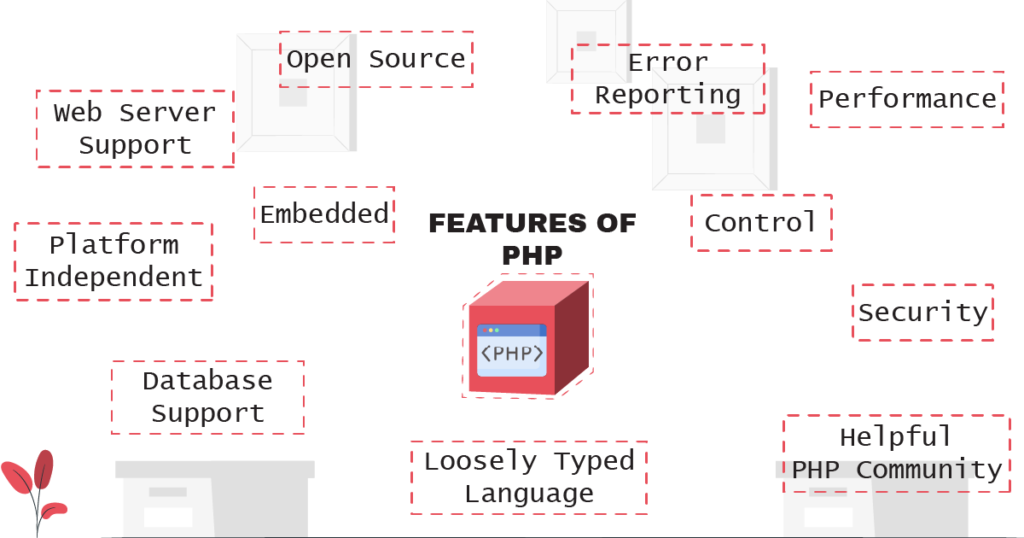
➤ To start, PHP’s ability for server-side scripting makes it a perfect fit for web development. This means it effortlessly integrates PDF creation right into websites or apps, allowing users to generate and download PDFs directly from the site without any hassle.
➤ One of its standout advantages is the diverse library ecosystem it offers. With a range of open-source PDF libraries such as TCPDF, FPDF, mPDF, Dompdf, and PDFlib, developers have plenty of choices. These libraries not only come with easy-to-use interfaces but also extensive documentation and strong community support, which makes the whole process of PDF generation a breeze.
➤ What’s impressive is the cost-effectiveness of using PHP and its associated PDF libraries. Since they’re open-source and free, they’re particularly appealing for smaller or medium-sized projects and organizations working with tight budgets. This eliminates the need for spending on expensive licensing fees.
➤ Furthermore, PHP’s agility in development allows for the quick creation of web applications. Integrating PDF generation seamlessly becomes a fundamental part of these projects. Its compatibility across various platforms ensures that web-based PDF generation tools can reach a broader audience.
Beyond just creating PDFs, PHP’s robust web support is what makes it stand out. Its range of web-related features, including handling HTTP requests, processing forms, and connecting to databases, makes dynamic PDF generation personalized to user needs a reality. This ability to fetch data and user inputs from web forms and databases adds a layer of customization, making the PDF generation process align precisely with what users require.
Would You Be Interested In Discovering The Process Of Generating PDFs Using Python?
Delve into the comprehensive, step-by-step guide provided in the blog.
Popular PHP Libraries For PDF Generation
Looking to create PDFs using PHP? Dive into the world of PDF generation with these libraries! From the reliable FDPF to the versatile TCPDF and DOMPDF, each brings its own set of features to the table. Want to convert HTML to PDF effortlessly? Check out HTML2PDF for seamless conversions. If you’re seeking a simple method to generate documents using templates, Perfect Doc Studio could become your preferred solution. Keep reading to discover how this tool eliminates the necessity for coding or design expertise, making everything remarkably straightforward. This delves into these libraries, offering insights, tips, and guidance for your PDF generation adventures!
FDPF
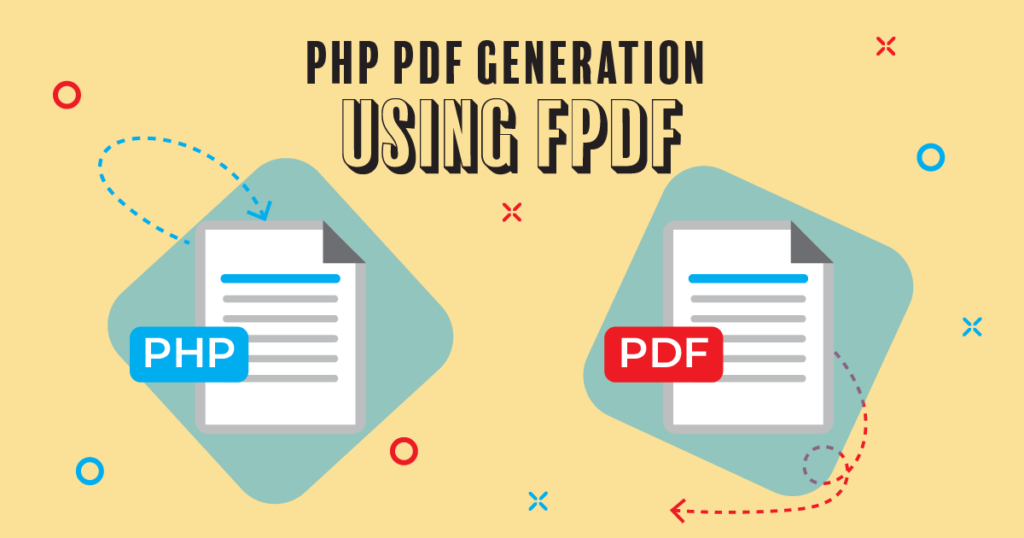
FPDF, short for Free Portable Document Format, is a robust PHP class offering an array of functions to create and modify PDFs without any cost. This class is a powerhouse, supporting diverse features such as handling images in PNG, JPEG, and GIF formats, setting up page headers and footers, managing page formats, and automatically handling page breaks.
However, being a third-party library, integrating FPDF into your project requires a few steps:
1. Download FPDF: Start by grabbing the FPDF class from the official FPDF website. It is infact available for free.
2. Organize Files: Once downloaded, create a designated folder on your system and extract the FPDF package into it. For instance, you might name this folder ‘fpdf’ or any title that suits your project structure.
3. Script Setup: Inside the folder where you’ve placed the FPDF files, create a new PHP file, let’s say ‘scriptToPDF.php’, and insert the provided code snippet. Save the file. To test it out, access this script through your local server, typically something like ‘http://localhost/fpdf/scriptToPDF.php’.
SetFont('Arial', 'B', 12);
$this->SetTextColor(0);
// Title
$this->Cell(0, 10, 'My PDF Header', 0, 1, 'C');
$this->Ln(5); // Line break
}
// Footer function
function Footer() {
// Position at 1.5 cm from bottom
$this->SetY(-15);
// Set font and color for the footer
$this->SetFont('Arial', 'I', 8);
$this->SetTextColor(128);
// Page number
$this->Cell(0, 10, 'Page ' . $this->PageNo(), 0, 0, 'C');
}
}
// Create a PDF object
$pdf = new PDF();
// Add a page
$pdf->AddPage();
// Set font and color for the content
$pdf->SetFont('Arial', '', 12);
$pdf->SetTextColor(0);
// Add content (e.g., text)
$pdf->Cell(0, 10, 'Hello, this is a sample PDF created with FPDF.', 0, 1);
// Add an image
$pdf->Image('path/to/your/image.jpg', 10, 30, 100); // Change 'path/to/your/image.jpg' to your image's path
// Output PDF to the browser
$pdf->Output();
You can modify and add content between the AddPage() and Output() functions to include the specifics of your PDF document. Adjust fonts, styles, and layout according to your requirements within the provided structure.
TCPDF
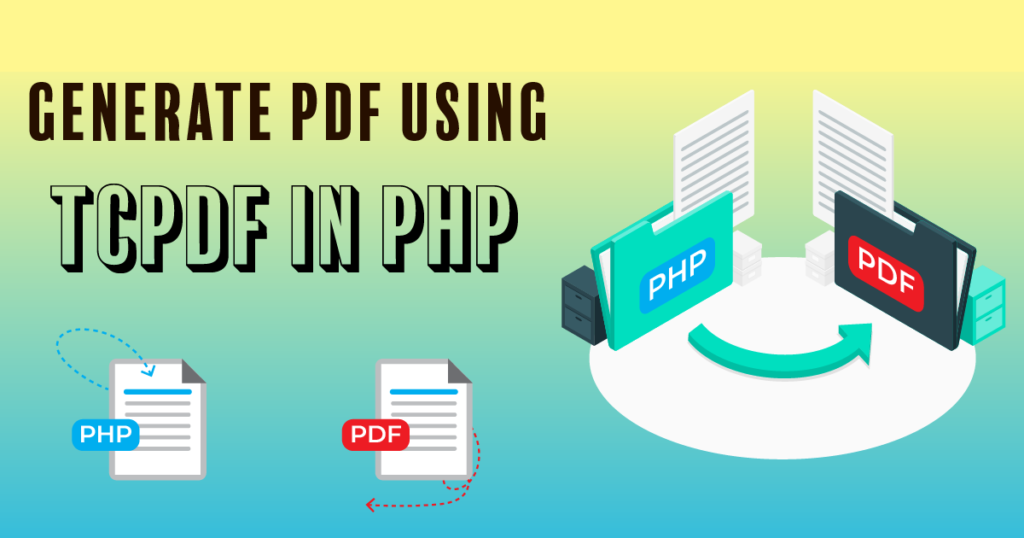
TCPDF in PHP is a game-changer for PDF creation! Getting started is a breeze—simply clone the GitHub repository. Once you’ve got that sorted, importing it into your PHP file is a snap.
This library is a powerhouse with multiple functionalities:
- Effortlessly manage headers and footers on pages.
- Text rendering? Check. It processes XHTML + CSS, JavaScript, and Forms seamlessly.
- Native support for JPEG, PNG, and SVG images
- Need page breaks, line breaks, or text alignments? It’s all automated, saving you time and hassle.
- Plus, it’s equipped with nifty features like page grouping, automatic page numbering, and more.
To set it up, here’s what you need to do:
1. Clone the repository.
2. Create a file—let’s call it ‘myPDF.php’ (or any other name you prefer)—inside the cloned folder.
3. Insert the provided code snippet into your newly created file, and you’re good to go!
<?php
// Include the main TCPDF library
require_once('tcpdf.php');
// Create new PDF document
$pdf = new TCPDF(PDF_PAGE_ORIENTATION, PDF_UNIT, PDF_PAGE_FORMAT, true, 'UTF-8', false);
// Set document information
$pdf->SetCreator(PDF_CREATOR);
$pdf->SetAuthor('John Doe');
$pdf->SetTitle('Multi-page PDF using TCPDF');
// Set default header data
$pdf->SetHeaderData(PDF_HEADER_LOGO, PDF_HEADER_LOGO_WIDTH, PDF_HEADER_TITLE.' 007', PDF_HEADER_STRING);
// Set header and footer fonts
$pdf->setHeaderFont(Array(PDF_FONT_NAME_MAIN, '', PDF_FONT_SIZE_MAIN));
$pdf->setFooterFont(Array(PDF_FONT_NAME_DATA, '', PDF_FONT_SIZE_DATA));
// Set default monospaced font
$pdf->SetDefaultMonospacedFont(PDF_FONT_MONOSPACED);
// Set margins
$pdf->SetMargins(20, 20, 20);
$pdf->SetHeaderMargin(PDF_MARGIN_HEADER);
$pdf->SetFooterMargin(PDF_MARGIN_FOOTER);
// Set auto page breaks
$pdf->SetAutoPageBreak(TRUE, PDF_MARGIN_BOTTOM);
// Set image scale factor
$pdf->setImageScale(PDF_IMAGE_SCALE_RATIO);
// Add first page
$pdf->AddPage();
// Add content to the first page
$html = <<<EOD
<h1>TCPDF PHP Library is amazing!</h1>
<i>This is an example of creating multi-page PDFs using TCPDF.</i>
<p>This is the first page.</p>
<p>Check out more TCPDF documentation for advanced features.</p>
EOD;
$pdf->writeHTMLCell(0, 0, '', '', $html, 0, 1, 0, true, '', true);
// Add a new page
$pdf->AddPage();
// Add content to the second page
$html = '<h2>Second page content</h2>
<p>This is the content of the second page.</p>
<p>More content can be added here.</p>';
$pdf->writeHTML($html, true, false, true, false, '');
// Add another page
$pdf->AddPage();
// Add content to the third page
$html = '<h3>Third page</h3>
<p>Content for the third page goes here.</p>
<p>Customize and design as needed.</p>';
$pdf->writeHTML($html, true, false, true, false, '');
// Output the PDF as inline
$pdf->Output('multi_page_example.pdf', 'I');
?> This modified example creates a multi-page PDF with different content on each page. Adjust the HTML content in the $html variables to customize the content for each page as needed.
DOMPDF
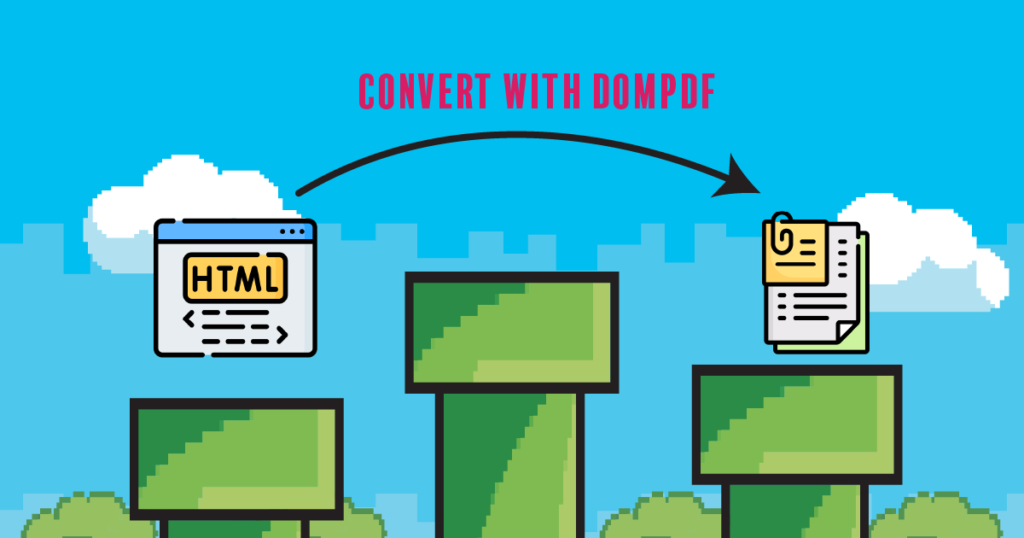
DomPDF serves as a robust PHP-based tool for converting HTML to PDF. This library adeptly interprets HTML and CSS documents, encompassing inline styles and external style sheets, to seamlessly generate PDFs. Its array of features includes:
1. CSS Support: Embraces CSS 2.1 and several CSS3 properties, such as @import, @media, and @page rules.
2. HTML Compatibility: Accommodates the majority of HTML 4.0 presentational attributes.
3. Table Complexity: Handles intricate tables without compatibility issues.
4. Image Inclusion: Supports various image formats like gif, png (8, 24, and 32-bit with alpha channel), bmp, and jpeg.
5. Independence: Operates without relying on third-party PDF libraries, ensuring autonomy and reliability.
One thing to note: To enable this, PHP version 7.1 or higher is required.
This library can be easily installed via composer:
composer require dompdf/dompdf
You have the option to clone the repository from GitHub onto your local system. Once you’ve cloned the repository, within that directory, you’ll want to create a file named index.php. Inside this file, you can include the following code snippet to get started.
<?php
// Include the Dompdf autoloader
require_once 'dompdf/autoload.inc.php';
// Use the Dompdf namespace
use Dompdf\Dompdf;
// Instantiate the Dompdf class
$dompdf = new Dompdf();
// HTML content
$html = '
<!DOCTYPE html>
<html lang="en">
<head>
<meta charset="UTF-8">
<title>Sample PDF</title>
<style>
body {
font-family: Arial, sans-serif;
}
h1 {
color: #333;
}
p {
font-size: 16px;
line-height: 1.5;
}
</style>
</head>
<body>
<h1>Generated PDF Example</h1>
<p>This is a sample PDF generated using Dompdf.</p>
<p>Feel free to add your own content here!</p>
</body>
</html>
';
// Load HTML content
$dompdf->loadHtml($html);
// Set paper size and orientation (Optional)
$dompdf->setPaper('A4', 'portrait');
// Render HTML as PDF
$dompdf->render();
// Output the generated PDF to the browser
$dompdf->stream('sample.pdf');
?>
This code creates a basic HTML structure with a heading and paragraphs and uses Dompdf to generate a PDF from that HTML. You can customize the HTML content to suit your requirements. After running this code, a PDF named sample.pdf will be streamed to the browser for download.
HTML2PD
The HTML2PDF API is a powerful tool that streamlines the conversion of web pages into PDFs. It operates by interpreting valid HTML codes and seamlessly translating them into PDF format, ideal for generating various documents like receipts or manuals.
One key point to remember is the necessity of incorporating specific tags to effectively leverage the html2pdf API. Hence, it’s highly recommended to craft your own HTML code to ensure smooth functionality. This API leverages TCPDF, enhancing its capabilities.
Let’s delve into its impressive features:
- Customizable Page Attributes: Tailor the page size and margins to your requirements.
- Personalized Styling: Alter fonts, colors, and layout elements to suit your preferences.
- Flexible Headers, Footers, and Offsets: Customize these components according to your document’s needs.
- Watermark Integration: Easily add watermarks to your PDFs for additional branding or security.
- Security Measures: Implement encryption or password protection to prevent unauthorized copying or printing of your PDF documents.
To tap into the HTML2PDF API, ensure your system meets these prerequisites:
- PHP version 5.6 or higher
- Installation of the mbstring or gd PHP extension
The best approach for installing HTML2PDF is by using Composer. First things first, run this command in your terminal or command prompt:
composer require spipu/html2pdf
Once that’s done, head over to your root folder and create a new file. Then, copy and paste the following code into that file.
<?php require __DIR__.'\autoload.php'; use Spipu\Html2Pdf\Html2Pdf; // Initializing Html2Pdf $html2pdf = new Html2Pdf(); // HTML content to convert to PDF $htmlContent = ' <h1>Creating PDFs with HTML2PDF</h1> <p>Converting web pages to PDF is effortless with the HTML2PDF API.</p> <p>Note that specific tags need to be used to utilize html2pdf.</p> '; // Writing HTML content to the PDF $html2pdf->writeHTML($htmlContent); // Outputting the generated PDF $html2pdf->output(); ?>
This code converts the HTML into a PDF file.
Before reading further, explore the Quora-sourced revelations on the best PHP PDF library! Check out the community’s top picks and expert opinions.
A quick rundown on how to generate PDF files with PHP?
FPDF represents a versatile PHP class enabling the creation of PDF files independently of supplementary PHP libraries. It’s freely accessible via the official website’s download section. Upon downloading the package, you’ll find all the requisite files bundled alongside tutorials elucidating its implementation.
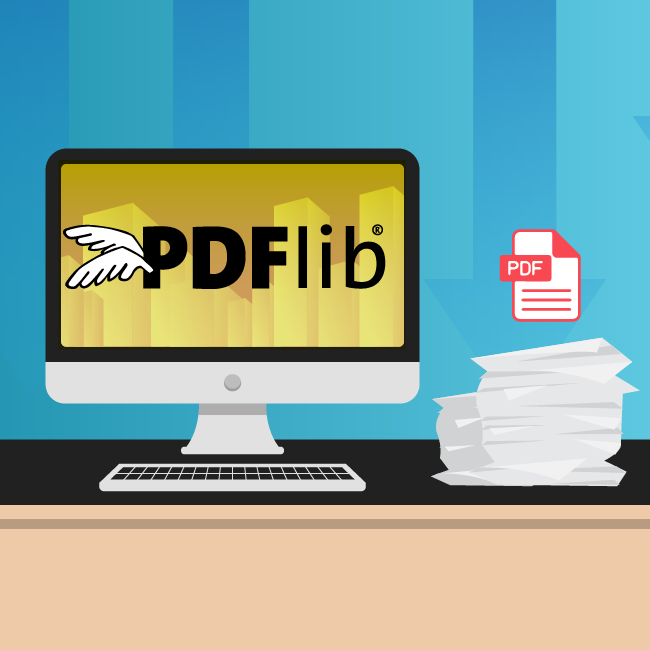
To incorporate the package into your account, leverage FTP or the File Manager within Site Tools. Post-upload, extract the contents, establishing an FPDF installation folder within any chosen directory on your account.
When getting started with FPDF, a simple way to begin is by using this PHP code snippet. Remember, it works best when you’ve already extracted the FPDF package into the same folder where your PHP file resides:
<?php
require('./fpdf.php');
$pdf = new FPDF();
$pdf->AddPage();
$pdf->SetFont('Ariel', 'B', 16);
$pdf->Cell(40,10,'Hello World!');
$pdf->Output();
?>
Let’s say you’ve placed the FPDF package in a folder like ~/public_html/fpdf/. Now, create a fresh PHP file—let’s call it toPDF.php—right in that same folder. Copy-paste the code above into this new file, save it, and get ready for the test.
Open your browser and type in http://yourdomain.com/fpdf/toPDF.php. Hit enter, and presto! The PHP magic runs its course, and voilà—you should see a brand-new PDF right there in your browser! Simple, right?
Perfect Doc Studio
Perfect Doc Studio simplifies PDF generation by employing an intuitive drag-and-drop document builder. Users smoothly integrate Doc Studio into their applications, effortlessly connecting data from various sources to craft comprehensive document templates.
But here’s the best part: you can slot Doc Studio right into your apps. Then, you gather info from all over and slot it into your fancy document templates. Doc Studio blends everything together, making these pixel-perfect documents.
These finalized documents are then conveniently delivered through the user’s preferred communication channels.
And the capabilities?
This platform simplifies document design through an intuitive interface that requires no coding expertise. You have the flexibility to enhance your documents with various elements such as images, tables, charts, QR codes, shapes, and creative SVGs, ensuring both an impressive appearance and functional quality.
Gone are the days of manual data input! With Perfect Doc Studio, you can effortlessly link to multiple data sources. Through the utilization of global variables, the platform automates the transfer of information from databases directly into your document templates.
Effortlessly expand your reach by translating your documents into over 100 languages with just a single click. This feature guarantees effective communication with your customers, allowing you to connect with them in their native language for better engagement.
But wait, there’s more! If you’re already using other business applications, Perfect Doc Studio seamlessly integrates. Whether it’s native integration or via web API, it effortlessly brings together your data and design, making your processes smoother than ever.
Are you facing challenges in generating documents? click to discover a range of tools that can help overcome these challenges.
Conclusion
Concluding, PHP PDF generation presents a range of libraries like TCPDF, FPDF, DOMPDF, and HTML2PDF, each with its unique strengths to cater to your needs.
Whether you prefer the straightforwardness of TCPDF, the user-friendly interface of FPDF, the compatibility with HTML and CSS offered by DOMPDF, or the advanced functionalities of HTML2PDF, there exists a solution perfectly suited for you.
For those less familiar with coding, fear not! Perfect Doc Studio presents itself as an accessible option, offering a seamless PDF generation experience without the necessity of extensive coding skills. Its impressive features, as highlighted in our analysis, make it an attractive choice for individuals seeking to simplify the document creation process.
Our aim has been to equip you with a variety of options, catering to both seasoned coding experts and newcomers to PDF generation. Take the opportunity to explore these tools, discover the one that aligns best with your preferences, and step into a more streamlined world of PDF creation.
Improving efficiency in the contract creation process
Contracts are the legal basis for all of the business interactions between a company and its custome
Top 10 pdf fillable form generators
No matter if you are dealing with documents for school, money, or yourself, you will have to fill ou
Capabilities of document generation software in 2023
If you are a programmer, you might be looking for a way to make the people who use the program you m




